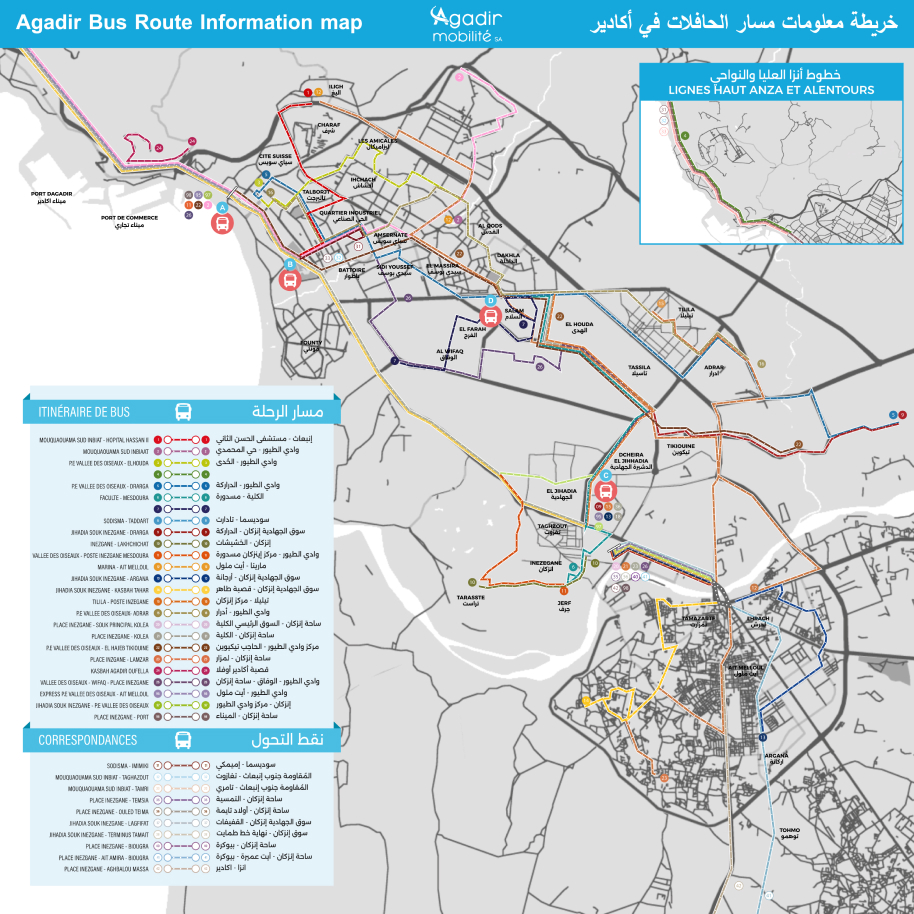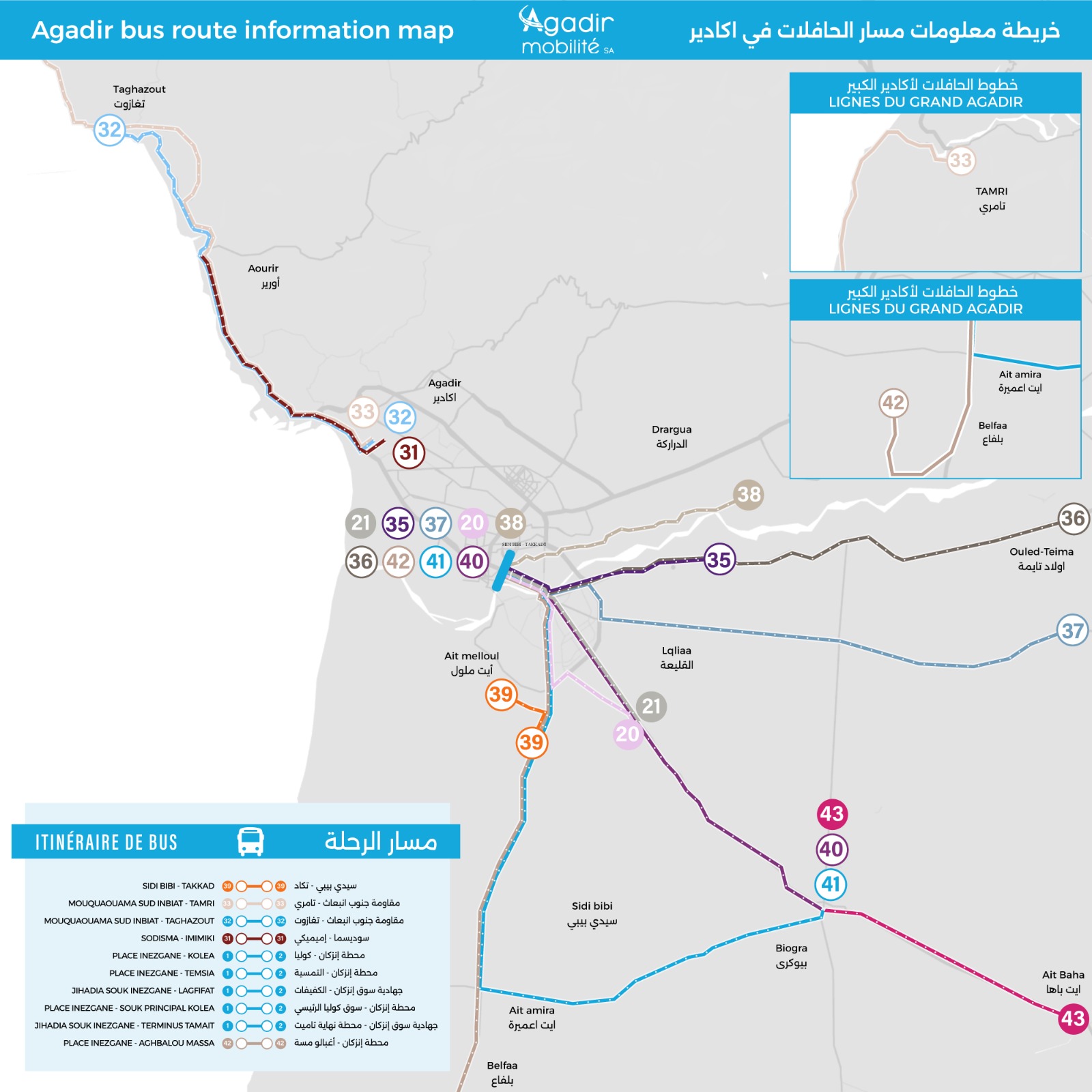Current Bus Network
The Grand Agadir urban area is the beating heart of the Souss-Massa Region, as it contains the most populous local communities in the region, starting with the city of Agadir, the capital, with a population of approximately 504,768 inhabitants (according to the latest 2024 census), followed by Aït Melloul with 210,870 inhabitants, and in third place, Inezgane with 137,512 inhabitants.
The Grand Agadir urban area is also distinguished by its tourist zones (the Agadir beach area, welcoming a large number of national and international tourists, and the Taghazout and Aourir areas (to the north), home to luxury hotel complexes and wild beaches nearby) as well as its significant agricultural and industrial areas (in the municipalities of Lqliaa and Temsia) and the port of Agadir.
The scope of the delegated public bus transport service management contract aligns with the scope of the Grouping of Local Authorities (GCT), Grand Agadir for Transport and Urban Mobility. It consists of twenty-four (24) municipalities from the prefectures of Agadir Ida-Outanane and Inezgane Ait Melloul and the provinces of Chtouka Ait Baha and Taroudant.
The current public bus transport network is a mesh network composed of urban and peri-urban lines, providing service to the territory through thirty-seven (37) lines, with a total length of approximately 672 km, including 294 km for urban lines and around 378 km for peri-urban lines, with nearly 560 stops. Since 2010, it has been managed by the delegated company “Alsa City Agadir” under a 15-year management contract. The service duration is seventeen (17) hours per day, with frequencies varying from line to line depending on demand and the characteristics of each line.
For more information on lines and schedules, please consult the Alsa website: https://www.alsa.ma/agadir/lignes
The current network has several strengths:
- Good spatial coverage that allows for the connectivity of several localities and links different areas of the territory with the bus mode.
- Strong demand, particularly due to the commercial activity that characterizes the area, especially around Aït Melloul-Inezgane.
- The network is concentrated on dense areas with the highest demand.
However, the current network faces several challenges, mainly the decrease in commercial speed on the main corridors due to traffic congestion and the sharing of roads between buses and other modes of transport. The infrastructure needed to enhance the flow of buses has not been adequately considered.






